Five-time Grammy-winner and multiple Hall-of-Fame member Cindy Cashdollar was born to music in Woodstock, NY. The Dobro and lap steel master has played with locals Bob Dylan, Levon Helm and John Sebastian as well as out-of-towners Van Morrison, Rod Stewart, Ryan Adams, Willie Nelson, Merle Haggard, Lyle Lovett and many, many others. Unable to tour during the pandemic, Cashdollar has been broadcasting music and music lessons online.
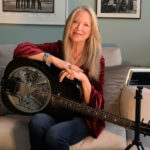 When I opened the Lume Cube Broadcast Lighting kit, I was very impressed with how lightweight and well-made everything felt. Clearly this could travel well in a carryon bag or suitcase, an important feature for any business traveler, especially a musician who’s also lugging instruments.
When I opened the Lume Cube Broadcast Lighting kit, I was very impressed with how lightweight and well-made everything felt. Clearly this could travel well in a carryon bag or suitcase, an important feature for any business traveler, especially a musician who’s also lugging instruments.
The components consist of a lighting cube, optional diffuser cover, telescoping stand with tripod and suction bases, charging cable and an adapter for a USB-C recharging port.
The control panel is conveniently located on the side of the cube. The power button also toggles between settings of “Brightness Mode” and “Color Temperature Mode,” with a dial that controls the intensity of each, very simple to operate. The diffuser easily slips over and around the cube (snugly staying in place) and is a great bonus for softening each light setting. A battery indicator is also displayed, though the unit can be kept plugged in for long sessions.
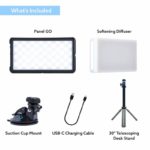 Though it’s easy to use, I did research an online “How To” video to make sure I wasn’t missing anything, and I would have appreciated a link to the instructional video included in the starter insert that came with the kit. For Elmore readers, here’s what I found.
Though it’s easy to use, I did research an online “How To” video to make sure I wasn’t missing anything, and I would have appreciated a link to the instructional video included in the starter insert that came with the kit. For Elmore readers, here’s what I found.
The telescoping stand has an adjustable 360-degree swivel head at the top and a choice of tripod or suction cup for the base. The stand telescopes from 16″ to 33″ (including the cube) when using the tripod base, and 2½” inches lower when using the suction cup base. The stand operates very smoothly when changing heights or adjusting angles with the ballhead, and everything is very sturdy and stays in place—more than I can say for a lot of mic stands I’ve struggled with in my career. I love that there are no numerous and annoying screws and parts to worry about and keep track of—it’s all very simple and self-contained. For a smaller footprint and a shorter height, attach the cube onto the suction cup base itself, yielding a height of 5″, great on a desktop for business or on the kitchen table for family meetings.
The optional diffuser does a beautiful job within the various choices of lighting offered on the control panel. I found that I didn’t need anything terribly bright within the settings (I went for soft and muted), but if I did, the diffuser would certainly even out and soften any harshness.
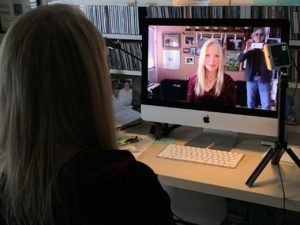 I experimented using the two totally different setups I normally use for broadcasts. The first was in my office with my desktop computer where I do Zoom interviews and music lessons. My office has various lighting challenges, including a picture window that can be an issue depending on the time of day, even with an adjustable blind. I experimented during the most challenging part of the day, when the sun is just starting to go down. It’s either too light and glare-y, too dark, or shadowy when the shade slats are adjusted. The Lume Cube Broadcast Lighting, with the diffuser and the settings on the lower end of brightness and light, smoothed everything out. I used the telescope stand (with the tripod base) on the side of my desk, to the right of my computer screen.
I experimented using the two totally different setups I normally use for broadcasts. The first was in my office with my desktop computer where I do Zoom interviews and music lessons. My office has various lighting challenges, including a picture window that can be an issue depending on the time of day, even with an adjustable blind. I experimented during the most challenging part of the day, when the sun is just starting to go down. It’s either too light and glare-y, too dark, or shadowy when the shade slats are adjusted. The Lume Cube Broadcast Lighting, with the diffuser and the settings on the lower end of brightness and light, smoothed everything out. I used the telescope stand (with the tripod base) on the side of my desk, to the right of my computer screen.
The second experimental setup was in my living room, where, due to the pandemic, I often need to film myself playing live, just speaking, or both. The lighting challenge there is a large ceiling-height window with no curtains. It’s great at a few times of the day, but mostly, it’s not great at all.
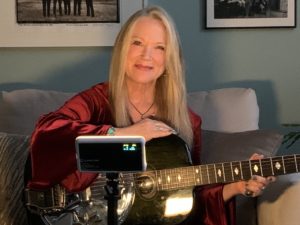 Again the Cube performed well, still using the diffuser and the lower and softer settings in the brightness and color temperature modes. It took the edge off of the afternoon sunshine and provided light when the sun was on its way down; when dark, it worked well in tandem with a lamp on the side table.
Again the Cube performed well, still using the diffuser and the lower and softer settings in the brightness and color temperature modes. It took the edge off of the afternoon sunshine and provided light when the sun was on its way down; when dark, it worked well in tandem with a lamp on the side table.
I used the stand with the tripod base, and the ease of telescoping and the ballhead adjustment were a bonus here. I ended up using it at a low height on the side table, and then on the floor, telescoped up to its highest.
All told, this is a well-made, travel-friendly unit for filming. For perfection, I would like to see an optional remote. In order to adjust the Lume Cube Broadcast Lighting, I’d put my instrument down and get up to adjust the light until it’s right, thereby losing the optimum position I had settled into for filming in the first place. Obviously it’s easy if someone is around to assist, but that’s not always the case, so for individuals performing or giving a presentation solo, a remote would be a Godsend.
That said, Broadcast Lighting Lume Cube is a well thought-out and well-made product, and a vast improvement over a light ring that I returned due to complicated operation, a flimsy stand that kept tipping over, and poor lighting even though it came with a large number of settings and a remote. The Broadcast Lighting Lume Cube beat it, hands down.
Standing O for Lume Cube!
—Cindy Cashdollar
Cashdollar’s latest album, Waltz for Abeline, was released last March.



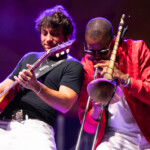

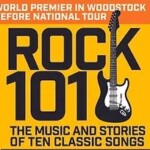
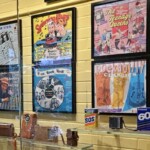

Be the first to comment!